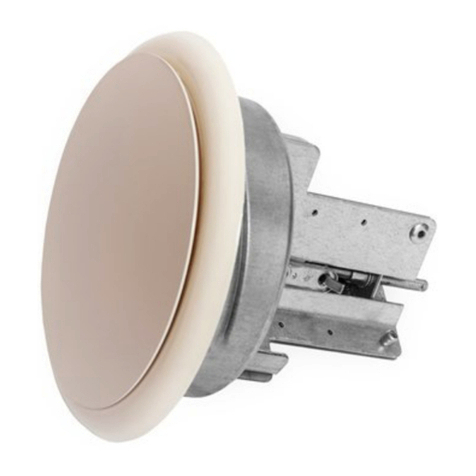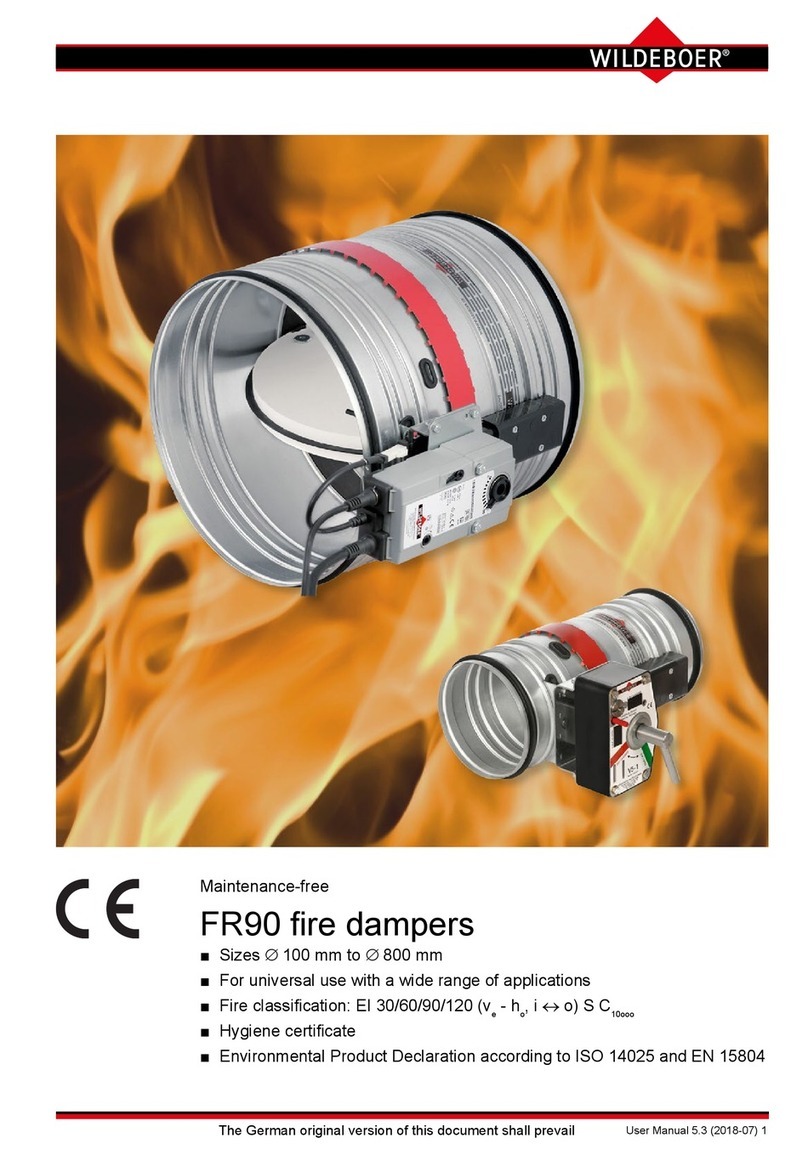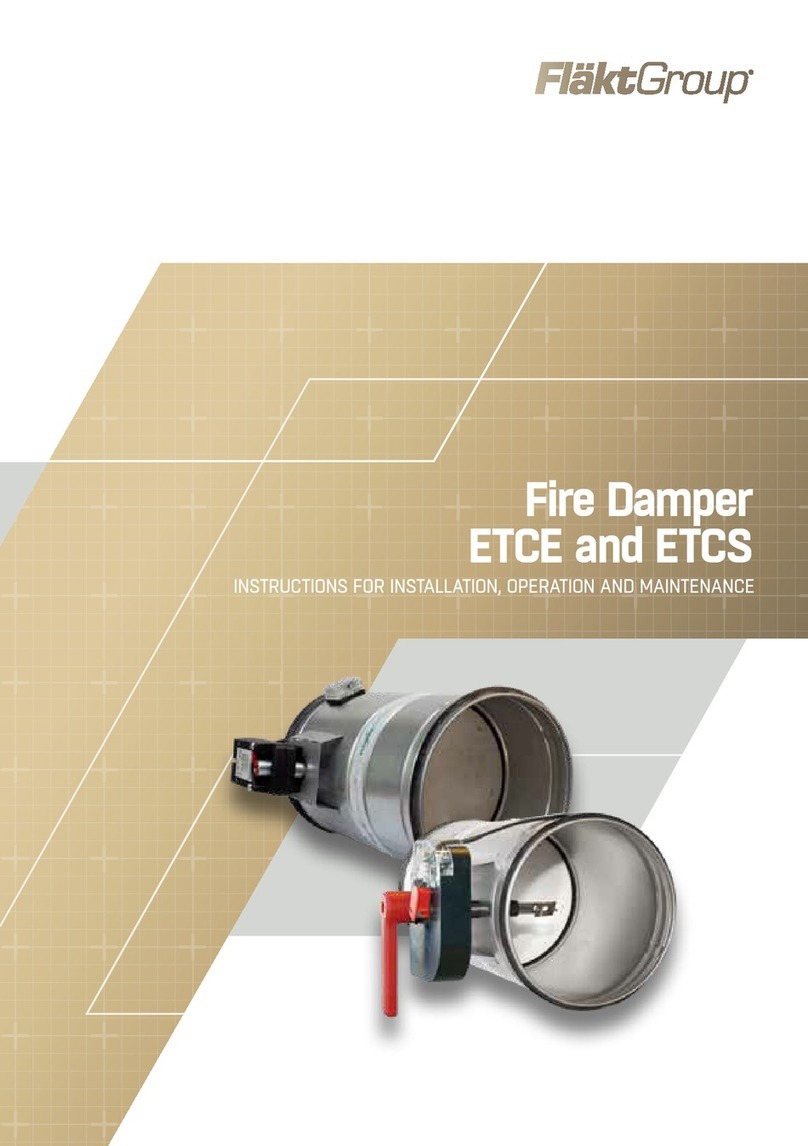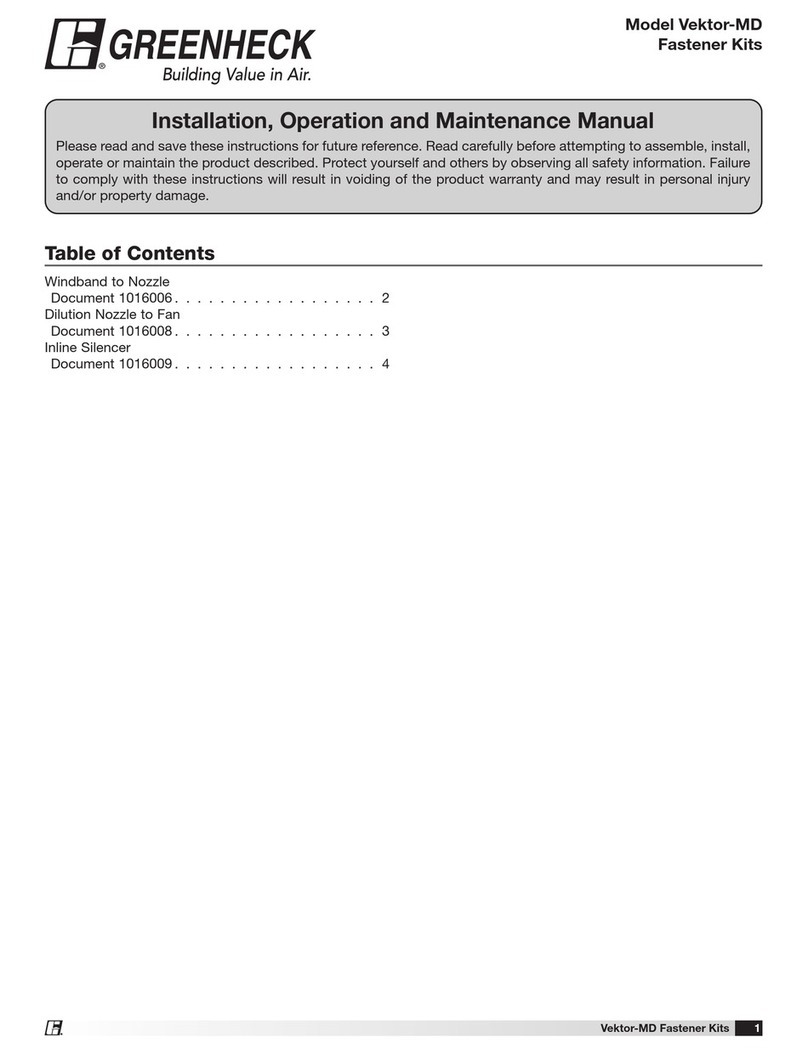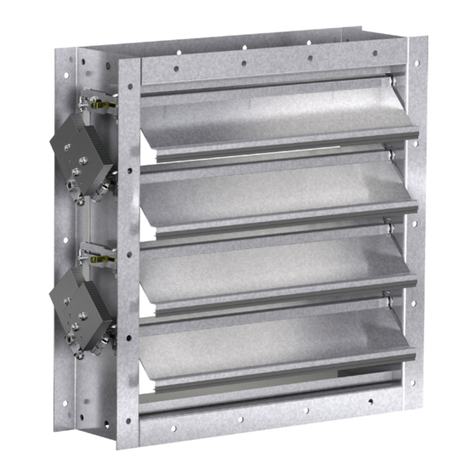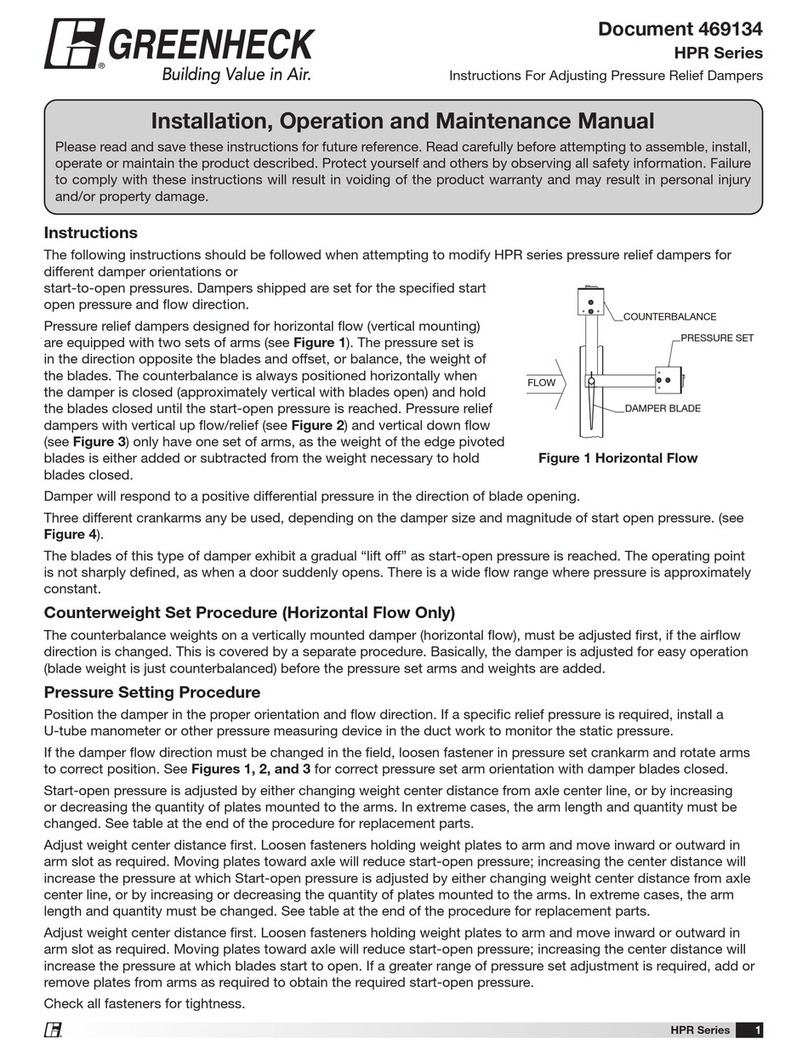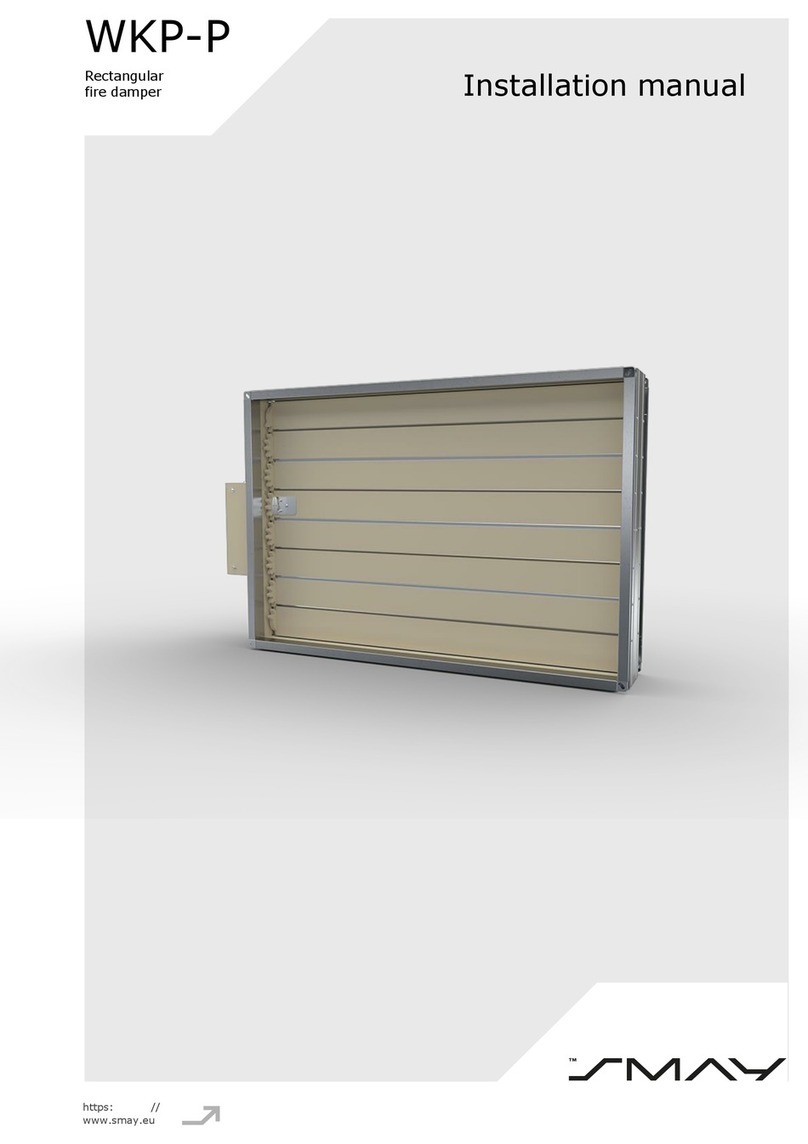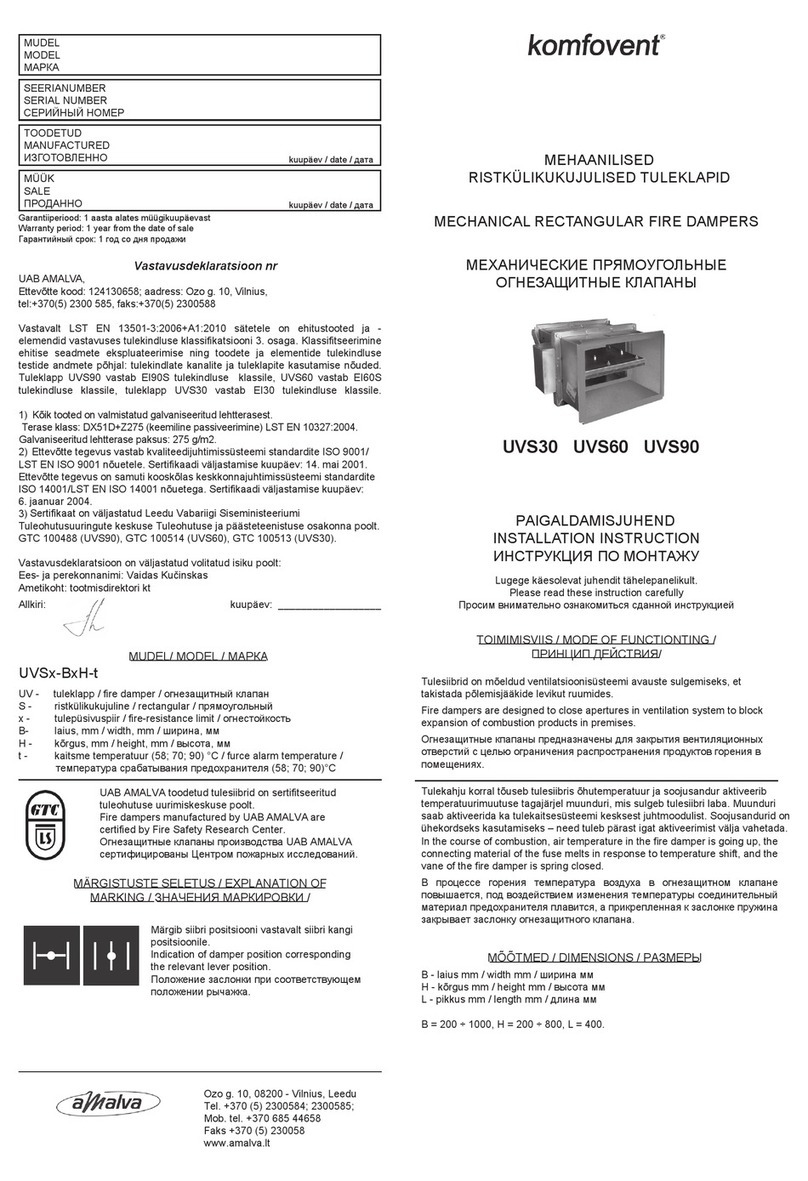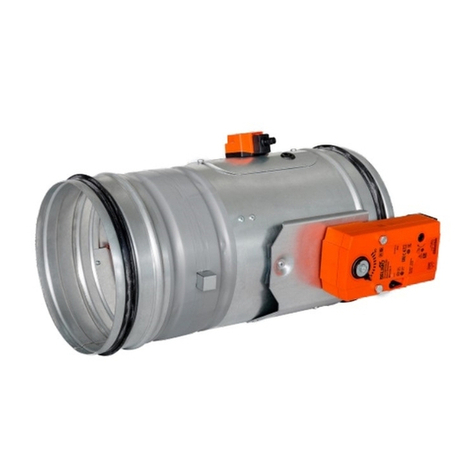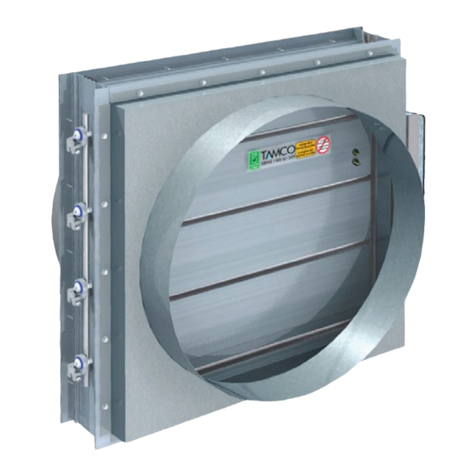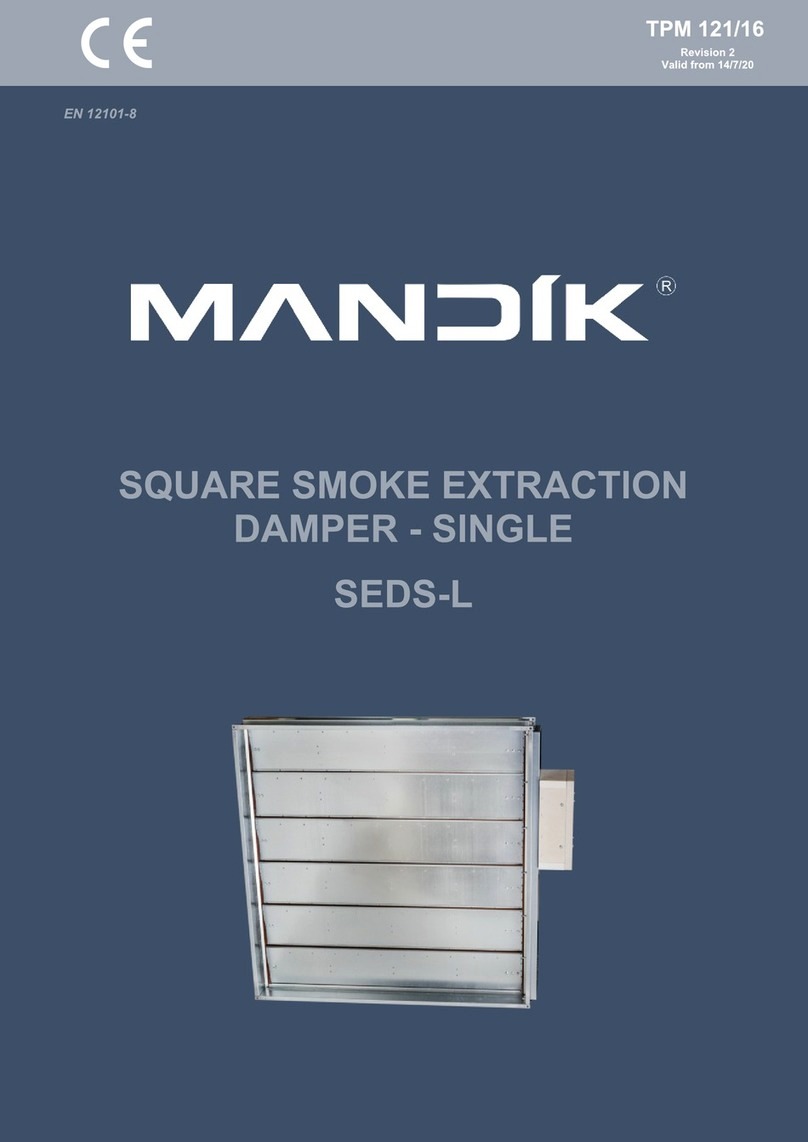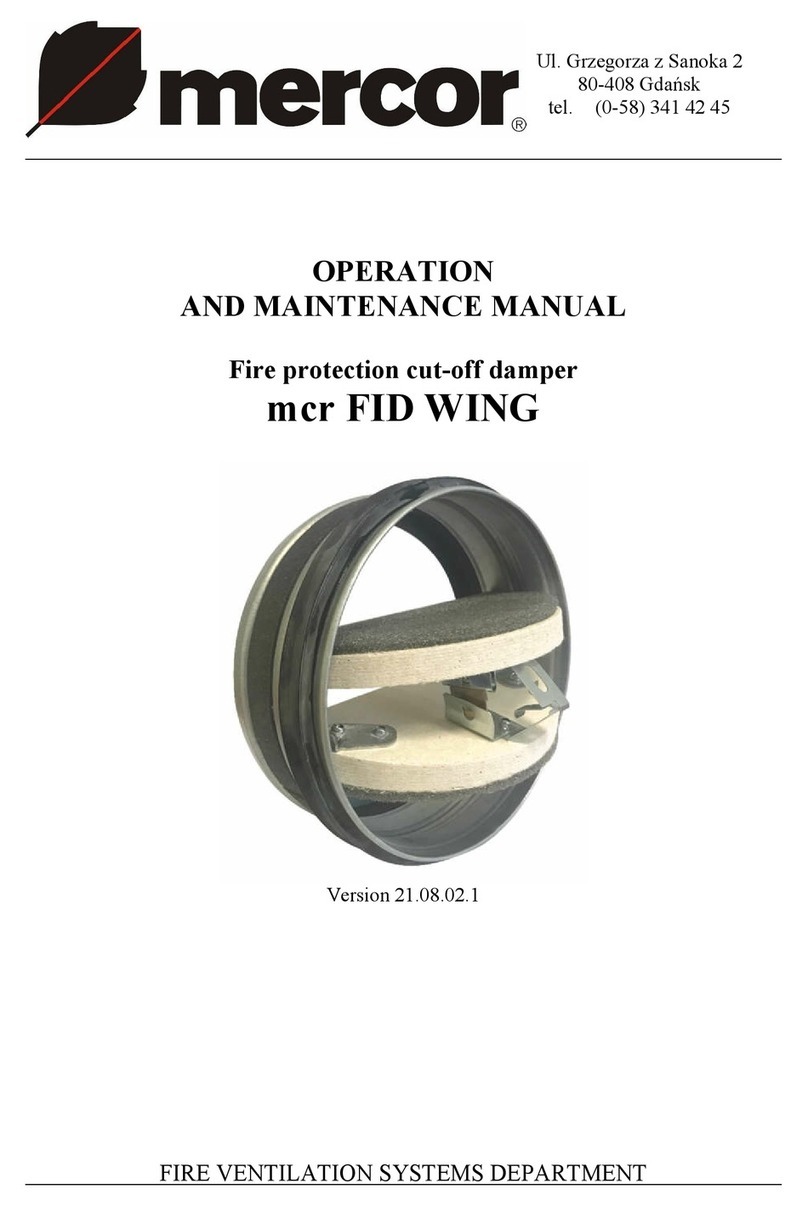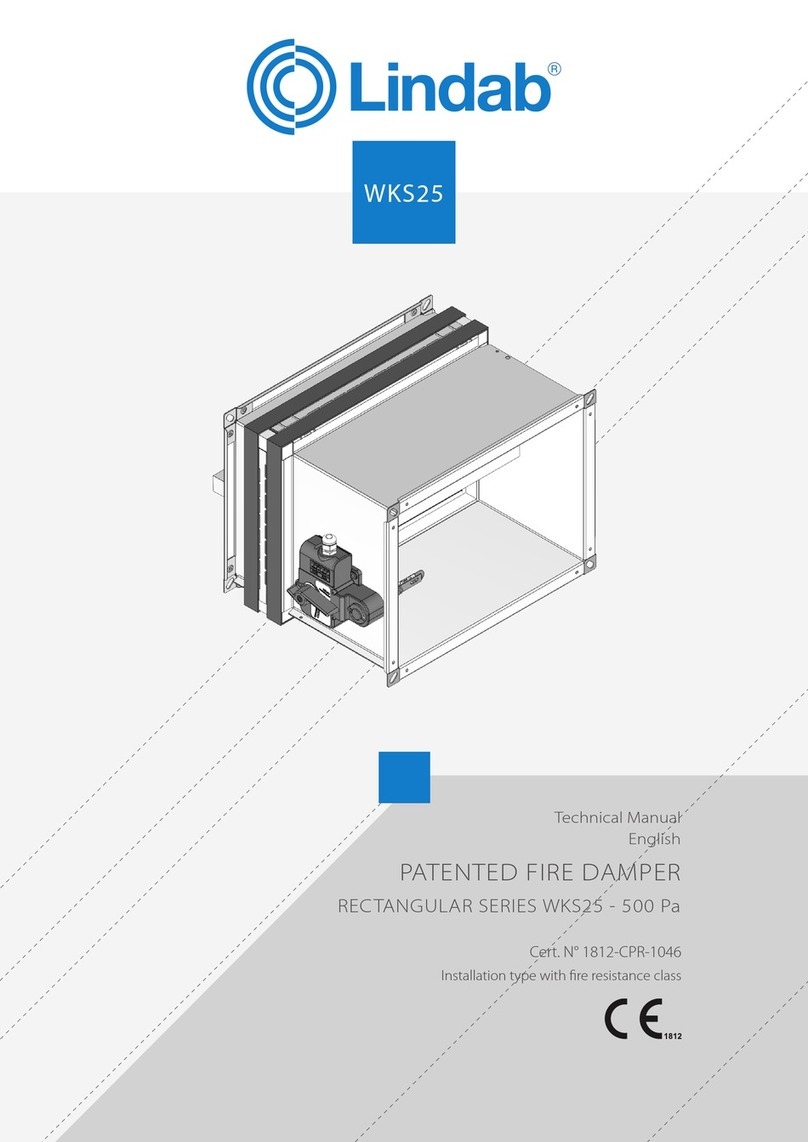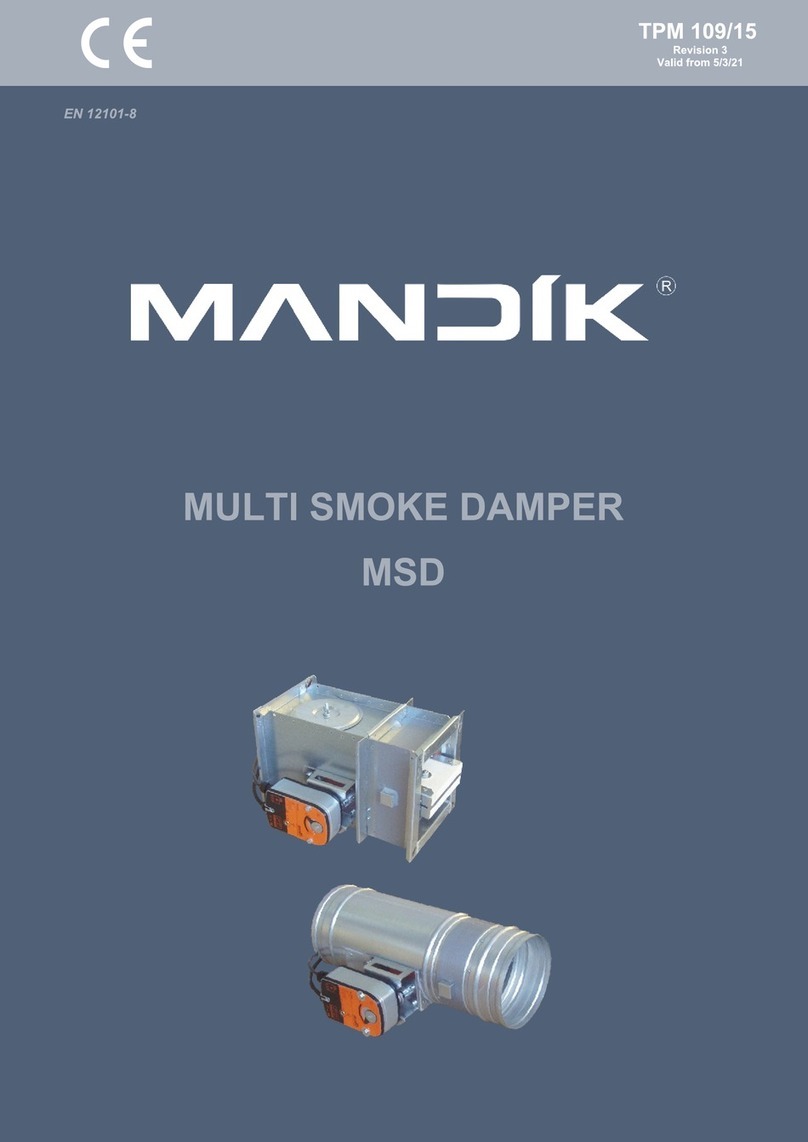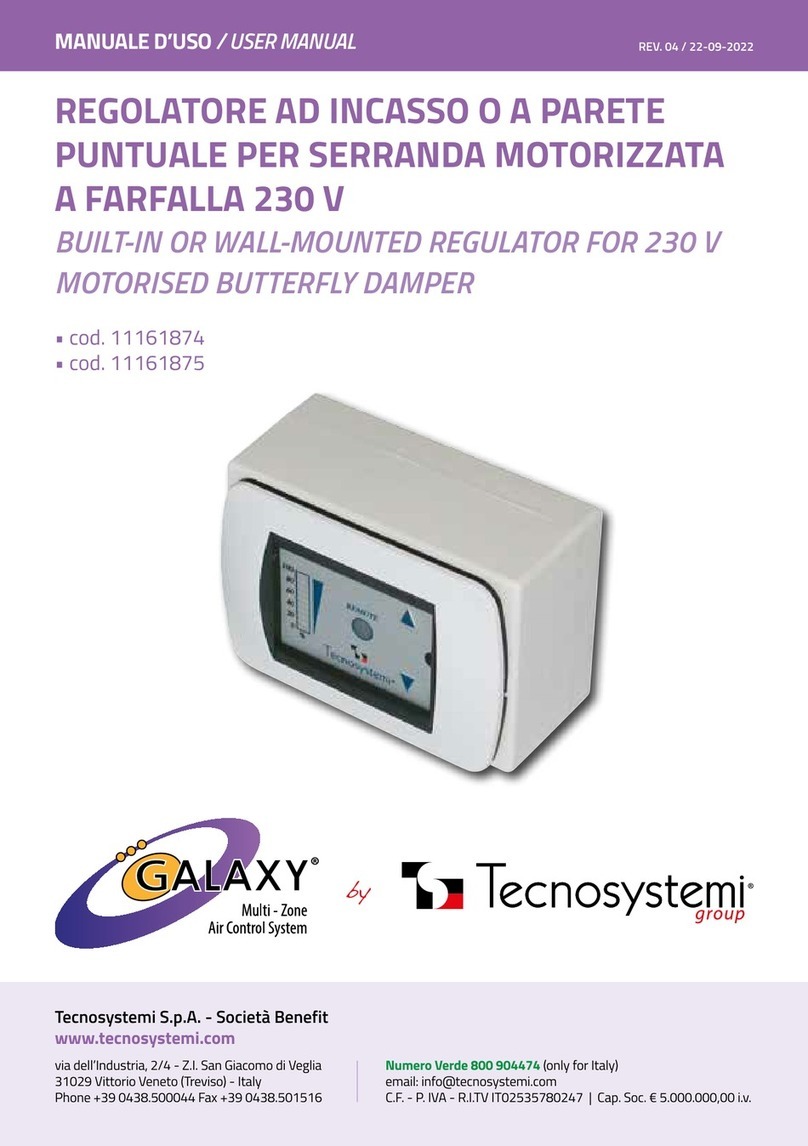
© T.A. Morrison & Co. Inc., 2020
TAMCO MEDIUM-DUTY BACKDRAFT DAMPER |
Installation Guidelines
For Series 7000, 7000 WT, 7000 CW
3
Secon 1 Secon 2
T-bar
#8x¾” Tek screw
#8x¾” Tek screw
Align boom of T-bar
0.625” above boom
edge of frame.
MULTI-SECTION BACKDRAFT
DAMPER ASSEMBLIES
>Sections may be installed in or over its own field-supplied support
structure individually, or they may be field-assembled prior to
installation.
>If field-assembly is required before installation, lay dampers on a
flat surface (such as a floor) with TAMCO label facing upwards to
assemble sections.
Note: T-Bars provided by TAMCO to interconnect damper sections,
are for alignment purposes only and may not be considered as
structural supports.
TWO OR MORE SECTIONS WIDE
1. Ensure that all backdraft damper sections are straight, even, and
aligned with each other.
2. T-bars are to be installed on the back (sticker) side of the damper.
3. To pierce alignment holes in the damper frames where the two
section meet, apply the T-bar extrusion so that it sits 0.625" (16 mm)
above the bottom edge of the vertical frames where backdraft
damper sections meet. Verify that the T-bar sits flat against each
damper frame and is flush to the side of each frame member, so it
does not interfere with blade operation.
4. Secure the T-bar to Section 2 through the lowest right hole in the
T-bar, using a #8x¾” Tek screw. Next secure the T-bar to the Section
1 through the uppermost left hole in the T-bar, using a #8x¾” Tek
screw. This will ensure proper alignment of two horizontally joining
sections, once the T-bar is fully installed.
5. If leakage is a concern, now remove the T-Bar and apply a bead of
silicone caulk along the joint where the two damper frames meet.
Then, replace the T-Bar and the two screws, using the alignment
holes made in Step 3.
6. Finish securing the T-Bar to the damper frames by inserting #8x¾”
Tek screws into the rest of the holes located on the T-Bar.
7. Repeat Steps 1-6 for any additional horizontally connected sections.
MULTIPLE SECTIONS WIDE
BY MULTIPLE SECTIONS HIGH
1. Ensure that all backdraft damper sections are straight, even, and
aligned with each other.
2. Install the bottommost sections of the backdraft damper assembly first.
3. T-bars are to be installed on the back (sticker) side of the damper.
Each T-bar will be shorter than the height of a single section. This is to
ensure that a full T-bar piece can be centered across the intersection
where four damper sections meet.
4. To pierce alignment holes in the damper frames where the two
section meet, apply the T-bar extrusion so that it sits 0.625" (16 mm)
above the bottommost edge of the vertical frames where backdraft
damper sections meet. Verify that the T-bar sits flat against each
damper frame and is flush to the side of each frame member, so it
does not interfere with blade operation.
5. Secure the T-bar to Section 2 through the lowest right hole in the
T-bar, using a #8x¾” Tek screw. Next secure the T-bar to the Section
1 through the uppermost left hole in the T-bar, using a #8x¾” Tek
screw. This will ensure proper alignment of two horizontally joining
sections, once the T-bar is fully installed.
6. If leakage is a concern, now remove the T-Bar and apply a bead of
silicone caulk along the joint where the two damper frames meet.
Then, replace the T-Bar and the two screws, using the alignment holes
made in Step 4.
7. Finish securing the T-Bar to the damper frames by inserting #8x¾” Tek
screws into the rest of the holes located on the T-Bar.
8. Repeat Steps 1-7 for any additional horizontally connected sections.
9. Install the next row of dampers. Stack the next T-Bar directly above
the previously fastened one, and repeat steps 1-8 for all subsequent
backdraft damper sections, until the full height of the damper is
connected with T-Bars.
STRUCTURAL SUPPORT REQUIREMENTS
>Field-supplied, intermediate structural support is required to resist
applied velocity and pressure loads for backdraft dampers that are
two or more sections high or wide.
>Angle bracing installed at multi-section joints will prevent bowing
and twisting of backdraft damper units.
>TAMCO Series 7000 Backdraft Dampers weigh approximately 2 lbs/
ft² (9.76 kg/m²). TAMCO Series 7000 WT and 7000 CW Backdraft
Dampers weigh approximately 3 lbs/ft² (14.65 kg/m²).
T-Bar
Secon 3 Secon 4
Secon 1 Secon 2
#8x¾” Tek screw
#8x¾” Tek screw
Align boom of T-bar
0.625” above boom
edge of frame.
